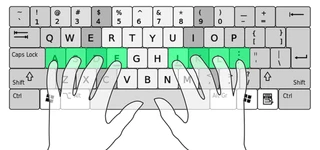How Forensic Signature Analysis is Leveraging Technology for Authenticity Verification?

In an increasingly digital world, signatures whether handwritten or electronic are pivotal in ensuring the authenticity and legality of agreements, contracts, and documents. However, with the rise in document forgery and fraud, ensuring that these signatures are genuine has never been more important.
This is where forensic signature analysis comes into play, supported by advanced software tools that allow experts to scrutinize and validate signatures. Let’s delve into the concept of forensic signature analysis, the role of various software solutions in this field, and how they help detect fraudulent activities.
What is Forensic Signature Analysis?
Forensic signature analysis refers to the scientific method of examining and authenticating signatures to determine their validity. This analysis is often used in legal cases or investigations where there is doubt about the authenticity of a document. Forensic experts use various techniques to scrutinize both handwritten and electronic signatures.
In the case of handwritten signatures, experts focus on identifying unique characteristics such as stroke patterns, pressure, slant, and overall writing style. They may also examine paper texture, ink composition, and the presence of any alterations.
For electronic signatures, forensic analysts use digital forensics to look at metadata, digital certificates, encryption algorithms, and the audit trail associated with the document.
The Growing Need for Software in Forensic Signature Analysis
As signature fraud becomes more sophisticated, forensic experts have increasingly turned to specialized software tools to streamline their analysis and ensure a higher level of accuracy. These tools not only help analyze handwritten signatures but are also crucial for verifying electronic signatures, which are a common target for fraud due to their digital nature.
1. Handwritten Signature Verification Software for Forensic Analysis
Forensic analysis of handwritten signatures can be a labor-intensive process, often requiring the expertise of specialized professionals. However, with the help of advanced software, forensic experts can speed up the examination process and improve the precision of their findings.
PhotoScan: A tool frequently used for analyzing handwritten signatures, PhotoScan allows forensic experts to capture high-resolution images of signatures and identify inconsistencies. The software also provides tools to examine the pressure and stroke patterns, essential in detecting forgeries.
SignaScan: This software compares questioned signatures with known samples to detect differences in writing style, pressure, and speed. This comparison can help forensic experts identify if a signature has been forged or altered.
Triton Digital Image Processing: Forensic experts use this software to perform detailed analysis on scanned handwritten signatures, checking for irregularities such as inconsistencies in line quality or any signs of tampering.
Cygnature
2. Document and Electronic Signature Software for Forensic Analysis
When it comes to electronic signatures, the process of verification becomes slightly different due to the digital nature of these signatures. Electronic signature software uses encryption, timestamps, and digital certificates to validate the authenticity of a signature. Forensic experts can now leverage digital signature software technology to detect any tampering or alterations in digital documents.
Adobe Acrobat Pro DC: Experts widely use Adobe Acrobat Pro in the forensic analysis of digital documents to verify the authenticity of electronic signatures. They analyze the signer’s certificate, timestamps, and audit trail to check if anyone altered the document after signing and to verify that they applied the signature correctly.
Adobe Acrobat Pro DC for teams
DocuSign: Known for its user-friendly interface, DocuSign also provides valuable tools for forensic experts. Its audit trail, which logs every step of the signing process, allows experts to trace who signed the document, when it was signed, and if any changes were made afterward. This can be vital for verifying the authenticity of electronic signatures in legal cases.
DocuSign
X1 Social Discovery: Primarily used in digital forensics, this software enables experts to extract metadata from digital documents. By examining this data, forensic experts can confirm whether an electronic signature is genuine, trace the document’s history, and identify if it has been tampered with.
3. Comprehensive Digital Forensics Tools
For more complex cases involving both electronic and handwritten signatures, forensic experts may turn to comprehensive digital forensics software. These tools allow for the in-depth examination of both the document and its signature, whether electronic or handwritten.
EnCase Forensic: It is a powerful digital forensics tool that investigators use to collect, analyze, and report on digital evidence. It allows users to analyze metadata in documents, verify digital signatures, and recover deleted or altered files. This capability helps forensic experts determine if someone has digitally manipulated a signature..
FTK (Forensic Toolkit): FTK is a comprehensive forensic solution that helps experts to gather and analyze digital evidence. It can detect document tampering and track digital signatures, allowing forensic experts to create a clear audit trail of the document’s history.
CryptoESIGN
4. Metadata and Audit Trails
One of the most significant benefits of electronic signatures is the ability to create a secure audit trail, making them easier to validate than handwritten signatures. Metadata, which includes details such as timestamps, signer information, and document history, is embedded within the document. Forensic experts can extract this metadata and analyze it using forensic software to verify whether the signature is legitimate.
Software like GlobalSign and Signotec allows forensic experts to examine the metadata associated with electronic signatures. These tools track not only the signing process but also any changes made to the document, giving experts a clear view of whether the signature is authentic or has been altered.
Conclusion: Bridging Forensic Expertise with Software Technology
Forensic signature analysis is a crucial aspect of validating the authenticity of signatures in legal and business contexts. By utilizing advanced software tools, forensic experts can quickly assess whether a signature handwritten or electronic is genuine.
With their digital forensics tools , experts enhance their analysis and detect fraudulent signatures, providing solid evidence for legal proceedings. As fraudsters develop new techniques for forging signatures, collaboration between forensic experts and technology ensures verification of authenticity.
This collaboration ultimately protects individuals and businesses from fraud while preserving the integrity of important documents.
Both handwritten and digital signatures require careful scrutiny. Forensic analysis, along with advanced software, plays a critical role in ensuring their authenticity. This process is essential for maintaining the security of the signatures that support our agreements.
The Techjockey content team is a passionate group of writers and editors dedicated to helping businesses make informed software buying decisions. We have a deep understanding of the Indian software market and the challenges that businesses face when choosing the right software for their needs. We are committed... Read more









.png?d=100x100)


















